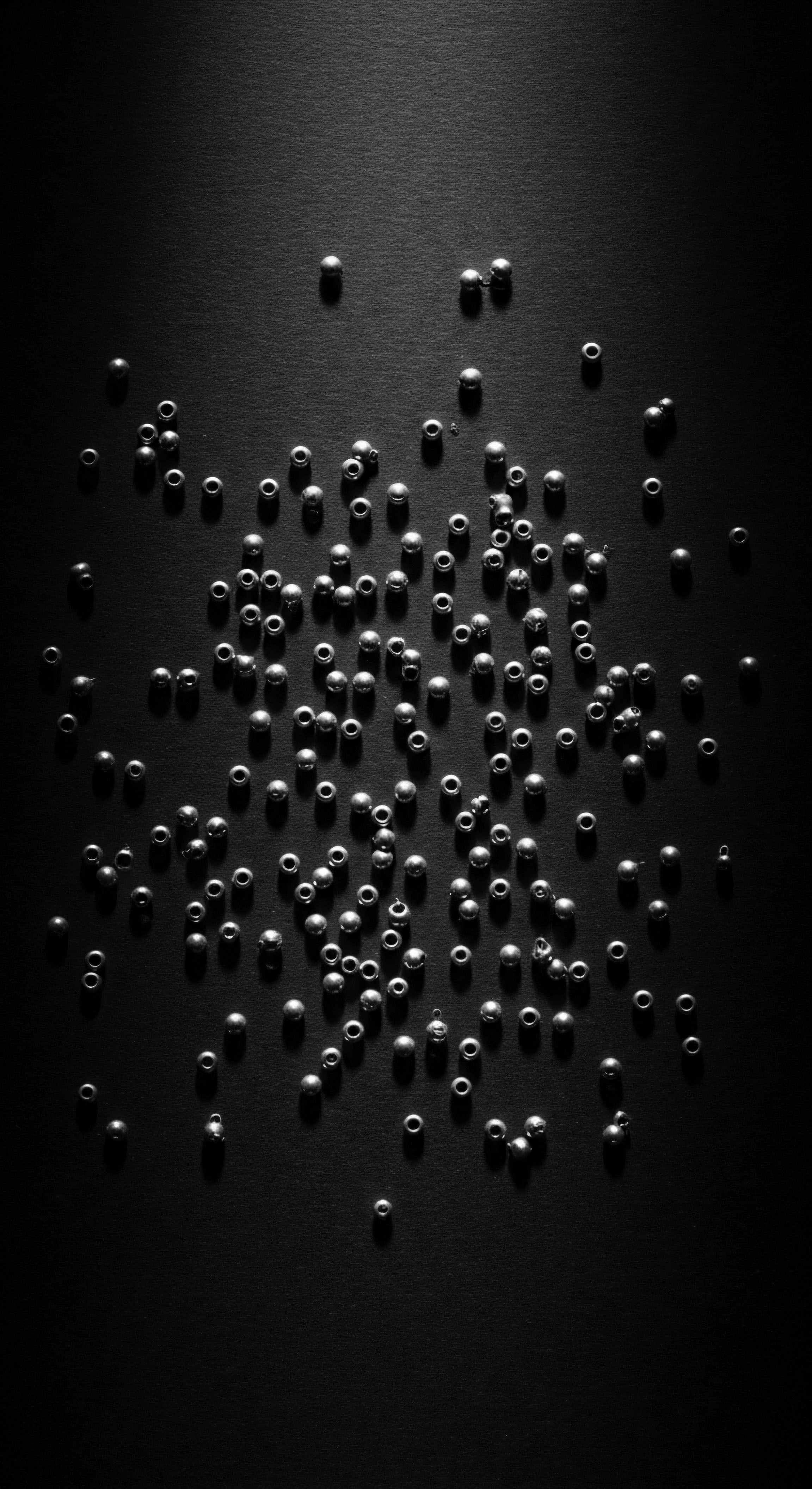
Roots
The coil and curl of textured hair, so often misunderstood in modern times, holds within its very structure an ancestral memory, a testament to resilience and profound connection to the earth. To truly grasp what natural ingredients were used for historical textured hair purification, one must first listen to the whispers of ancient winds, carrying the scent of earth and botanicals. These original purification practices were not mere acts of hygiene; they formed the very foundation of hair’s well-being, a dialogue between humanity and the natural world, deeply steeped in a heritage of mindful care. The origins of cleansing, for hair as for body, are as old as human habitation, driven by both practical need and a spiritual reverence for cleanliness.
Early civilizations, long before the advent of synthetic compounds, looked to the immediate environment for solutions to daily needs. The cleansing of hair, particularly textured hair with its unique porosity and tendency towards dryness, demanded ingredients that could purify without stripping vital moisture. From the Nile’s fertile banks to the vast landscapes of the African continent, diverse communities discovered the inherent properties of plants and minerals that offered gentle, yet effective, purification. These practices formed the bedrock of a heritage of hair knowledge passed through generations, an intimate understanding of biology and botany.

Cleansing From the Earth’s Deep Bounty
The ground itself offered potent purification agents. Clays, rich with minerals, stood as a primary cleanser for textured hair across many historical contexts. Consider Rhassoul Clay, also known as ghassoul, sourced from the Atlas Mountains of Morocco. For centuries, this volcanic clay, bearing high contents of silica, magnesium, calcium, and potassium, served as a purifying and nourishing agent for Afro and textured hair.
Its ability to absorb impurities and excess sebum without dehydrating the hair made it a treasured element in ancestral regimens. The very name “Rhassoul” traces its lineage from the Arabic word “rassala,” meaning “to wash,” directly pointing to its historical cleansing purpose. Similarly, Kaolin Clay found utility in various cultures, celebrated for its gentle cleansing action, its capacity to absorb excess oil, and its ability to soothe the scalp without harshness.
These earth-derived cleansers operated on principles of adsorption and ion exchange, drawing out dirt and oil while imparting minerals. They exemplified an early understanding of hair’s delicate balance, recognizing the need to remove impurities without disturbing its natural state. The wisdom of these ancient practices resonates strongly today, offering a profound lesson in cleansing with reverence for hair’s original design.

Herbal Infusions for Ancient Strands
Beyond the mineral earth, the botanical realm offered a spectrum of purification possibilities. Plants containing Saponins, natural foaming agents, were widely recognized for their cleansing properties. These “soapy plants,” when agitated in water, produced a stable lather, a testament to their inherent ability to lift dirt and impurities from hair and scalp.
Across African communities, numerous species were identified and utilized for this purpose. The Afar people of Northeastern Ethiopia, for instance, employed plants like Sesamum Orientale leaves for hair cleansing, underscoring a deep ethnomedicinal knowledge.
In the rich traditions of Ayurveda, practices from ancient India that greatly influenced diasporic communities through trade and exchange, ingredients such as Shikakai (Acacia concinna) and Reetha (Sapindus mukorossi or soapnut) were central to hair purification. These pods and nuts, when prepared, offered a gentle yet effective lather, conditioning the hair while cleansing it. This cross-cultural application of saponin-rich botanicals reveals a shared ancestral wisdom concerning natural purification, adapting to regional flora yet adhering to a universal principle of gentle, plant-derived care.
The cleansing of textured hair, historically, was a careful, deliberate act, choosing natural elements that purified without erasing the hair’s inherent vitality.
The deep understanding of how specific plants interacted with hair’s unique structure—its tight curls and coils, its propensity for dryness—was a hallmark of these ancestral purification rituals. This knowledge was often passed through oral traditions, hands-on teaching, and communal practices, reinforcing the living archive that defines textured hair heritage.

Ritual
The act of cleansing textured hair in historical contexts extended beyond mere removal of soil or debris. It unfolded as a profound ritual, a sacred connection to shared memory and a purposeful affirmation of self and community. These purification practices were intricately woven into the daily existence and cultural expression of Black and mixed-race peoples, each motion, each ingredient chosen with deliberate intent. The very rhythm of hair care, punctuated by these cleansing moments, served as a conduit for ancestral wisdom, a living legacy etched into every strand.

Ancient Rites of Cleansing
In ancient Egypt, a civilization whose diverse populace included individuals with a range of hair textures, cleanliness held significant religious and personal value. Hair purification was a considered practice, utilizing readily available natural elements. Egyptians cleaned their hair with a blend of water and Citrus Juice, sometimes incorporating a form of Soap. The Ebers Papyrus, an ancient medical text, describes the use of soap-like materials crafted from Animal Fats, Vegetable Oils, and Alkaline Salts, suggesting a sophisticated understanding of emulsification and cleansing properties for their era.
Moreover, Natron, a naturally occurring sodium carbonate, was also employed. These historical accounts reveal a heritage of resourceful innovation, adapting natural resources for effective personal care, including hair purification. The act was often a prelude to elaborate styling or the application of wigs, emphasizing a holistic approach to presentation.
Further into the African continent, distinct communities developed their own localized purification rituals, often tied to specific local flora and a deep respect for the land.
- African Black Soap ❉ Hailing from West Africa, this traditional soap, often crafted from a combination of Shea Butter and plant ashes (like those from cocoa pods, plantain skins, or palm tree leaves), offered a purifying agent that was gentle on many hair types. Its widespread use speaks to an enduring practice of communal creation and knowledge sharing.
- Ziziphus Spina-Christi ❉ Among the Afar people of Northeastern Ethiopia, the pounded leaves of Ziziphus spina-christi, when combined with water, functioned as a traditional shampoo. This plant was particularly valued for its anti-dandruff properties, showcasing a targeted approach to scalp health as part of the purification ritual.
- Ghee (Clarified Butter) ❉ In certain Ethiopian communities, Ghee, a clarified butter, played a role in hair care, including cleansing preparation or as a post-cleansing treatment, underscoring the integration of nourishing elements with purification.

How Does Ancestral Wisdom Inform Modern Purification Choices?
The practices of purification were not isolated incidents; they formed part of a larger continuum of hair care and identity. Before the forced erasure of cultural practices during the transatlantic slave trade, hair styling in many parts of Africa was a means of identification, classification, and communication, intimately linked to spiritual expression. The very act of head shaving, imposed upon enslaved Africans, served as a deliberate act of dehumanization, stripping individuals of a vital cultural marker and a connection to their heritage. Yet, even in the face of such brutality, a profound resilience endured, with new expressions of hair care emerging from necessity and adaptation.
The preparation of these historical purifying agents often involved communal effort. Gathering plants, grinding clays, or rendering fats were activities that reinforced social bonds and transferred practical knowledge from elder to youth. These shared experiences ensured the continuity of hair care traditions, even as communities faced displacement and profound systemic challenges. The ingredients themselves became symbols of connection—to the land, to shared history, and to the enduring spirit of a people.
The ritual of hair cleansing in historical textured hair traditions was a conscious, communal act, affirming identity and connection to ancestral practices.
This communal aspect highlights that purification was more than a singular action; it was a societal value, a tangible expression of beauty standards that were self-defined and rooted in cultural integrity, far removed from externally imposed ideals. The meticulous preparation of these natural ingredients, often involving days of foraging and processing, underscores the reverence held for hair and its cleanliness.

Relay
The echoes of ancient cleansing traditions continue to resonate, informing our grasp of textured hair purification today. The methods and ingredients of ancestors, once dismissed as mere folklore, now find validation through scientific understanding. This convergence of historical practice and contemporary research allows for a deeper appreciation of the ingenious ways natural elements were harnessed for hair care. The legacy of these practices is not simply a historical footnote; it is a living continuum, influencing current approaches to holistic hair wellness and reaffirming the resilience of textured hair heritage.

The Science Behind Ancient Cleansers
Many traditional purification agents for textured hair, particularly those from African and indigenous traditions, possessed inherent chemical properties that made them effective. Plants rich in Saponins, for example, function as natural surfactants. Saponins are glycosides that create a stable lather when agitated in water due to their amphiphilic structure, allowing them to lift oils and dirt without stripping hair of its natural moisture. This explains the efficacy of ingredients like Shikakai and Reetha from Ayurvedic traditions, or the various “soapy plants” documented in African ethnobotanical studies.
Similarly, the widespread use of Clays such as Rhassoul and Kaolin finds scientific backing. These clays possess a unique molecular structure and negative charge, allowing them to adsorb positively charged impurities (like dirt, excess oil, and product buildup) from the hair and scalp. This gentle action purifies the hair without disrupting its delicate lipid barrier, a critical advantage for textured hair which tends to be drier and more susceptible to damage from harsh cleansers. The ability of Rhassoul clay, specifically, to not disturb the hair’s natural balance makes it ideal for frizzy hair types.
| Traditional Ingredient Saponin-Rich Plants (e.g. Shikakai, Reetha, Sesamum orientale) |
| Ancestral Preparation/Use Crushed, steeped in water to create a frothing wash for cleansing and conditioning. |
| Modern Scientific Principle/Component Natural surfactants; provide gentle foam and cleansing action without harsh stripping. |
| Traditional Ingredient Clays (e.g. Rhassoul, Kaolin) |
| Ancestral Preparation/Use Mixed with water to form a paste, applied to hair and scalp for purification and mineral absorption. |
| Modern Scientific Principle/Component Adsorbent minerals; draw out impurities and excess oil while conditioning and remineralizing. |
| Traditional Ingredient African Black Soap |
| Ancestral Preparation/Use Made from plantain skins, cocoa pods, palm leaves, shea butter, providing cleansing and moisturizing properties. |
| Modern Scientific Principle/Component Alkaline salts from plant ash provide saponification; natural emollients protect and condition. |
| Traditional Ingredient Citrus Juices |
| Ancestral Preparation/Use Mixed with water for cleansing, often in ancient Egyptian practices. |
| Modern Scientific Principle/Component Natural acids and enzymes; mild astringent and clarifying properties, contribute to shine. |
| Traditional Ingredient Ancestral wisdom of purification harnessed nature's chemistry, offering effective care that continues to inspire. |

How Does Heritage Shape Our Understanding of Hair Purification’s Benefits?
The profound impact of these natural purification practices extended beyond mere physical cleanliness. In many African cultures, hair was (and remains) a powerful symbol of identity, social status, and spirituality. The care and cleanliness of hair were integral to personal presentation and communal well-being.
The forced suppression of these heritage practices during slavery, including the shaving of heads and the imposition of Eurocentric beauty standards, represented a calculated attack on Black identity and cultural expression. Yet, against this backdrop of oppression, the ancestral wisdom of natural hair care persisted, albeit often in secret or adapted forms.
The re-emergence of the natural hair movement in contemporary times represents a powerful reclaiming of this heritage. This movement, particularly among Black and mixed-race women, signifies a deliberate return to traditional practices and ingredients that honor the intrinsic nature of textured hair. This conscious choice to purify and care for hair with natural elements reflects a desire to reconnect with ancestral ways, to define beauty on one’s own terms, and to reject narratives that devalue natural hair.
For instance, the continued use of Shea Butter and various plant-based oils, traditionally used for moisture retention and protection after cleansing, speaks to an unbroken chain of knowledge. These practices affirm that true hair purity extends beyond removing dirt; it involves nurturing the hair’s inherent qualities, protecting its integrity, and allowing it to flourish in its natural state.
The journey of hair purification is a reflection of cultural resilience, transforming historical wisdom into contemporary affirmations of self.
The modern re-discovery and scientific study of these ancient ingredients and practices solidify their value. They highlight a continuity of care, a living archive of remedies and rituals that were, and remain, exquisitely suited to the needs of textured hair. This intergenerational knowledge, bridging elemental biology with deep cultural understanding, provides a comprehensive framework for how we approach hair purification today.

Reflection
The inquiry into what natural ingredients were used for historical textured hair purification ultimately leads us to a deeper contemplation ❉ how does the past truly inform the living vitality of each strand today? It becomes clear that hair purification, particularly within the vast and varied tapestry of Black and mixed-race heritage, was never simply a chore. It was an act of profound reverence, a moment of connection with the earth’s giving spirit, and a consistent affirmation of identity in a world that often sought to diminish it.
From the mineral-rich clays that gently drew out impurities to the saponin-laden plants that offered a clean, nurturing touch, each ingredient speaks volumes about an ancestral ingenuity born of necessity and deep attunement to nature. The meticulous gathering, preparation, and application of these natural elements forged a relationship between person and plant, between individual and community, fostering a heritage of holistic wellness. The stories embedded within these purification practices—of resilience, adaptation, and self-definition—are carried forward in the very helix of textured hair.
They remind us that the Soul of a Strand is not merely its physical composition; it is the culmination of generations of care, wisdom, and the enduring power of cultural memory. This exploration of historical hair purification reveals a legacy that continues to inspire, teaching us to honor our strands not just as an aesthetic choice, but as a vibrant, living archive of our collective past and a hopeful beacon for our future.

References
- Cox, J. Stevens. “Construction of an Ancient Egyptian Wig in the British Museum.” J. Egypt. Arch. 63 (1977) ❉ 67-70.
- Draelos, Zoe Diana. Hair Cosmetics ❉ An Overview. CRC Press, 2010.
- Erman, Adolf. Life in Ancient Egypt. Macmillan and Company, 1894.
- Kamil, Jill. The Ancient Egyptians ❉ Life in the Old Kingdom. American University in Cairo Press, 1998.
- Kunatsa, Yvonne, and David R. Katerere. “Checklist of African Soapy Saponin-Rich Plants for Possible Use in Communities’ Response to Global Pandemics.” Plants (Basel) 10, no. 5 (2021) ❉ 842.
- Lowery, Allison. Historical Wig Styling ❉ Ancient Egypt to the 1830s. Routledge, 2019.
- Mouchane, Mohamed, et al. “Ethnobotanical Survey of Medicinal Plants Used in the Treatment and Care of Hair in Karia ba Mohamed (Northern Morocco).” ResearchGate (2024).
- Nair, Geetha. “Herbal Cosmetics in Ancient India.” Pharmacognosy Reviews 6, no. 12 (2012) ❉ 159-166.
- Omonona, Bukola A. et al. “Cosmetic Ethnobotany Used by Tribal Women in Epe Communities of Lagos State, Nigeria.” Juniper Publishers (2024).
- Sanap, Kiran Sadanand, Sonali S. Sonawane, and Abhijit R. Rode. “Herbal Hair Care Cosmetics ❉ A Review.” International Journal for Multidisciplinary Research 5, no. 3 (2023) ❉ 1.
- Szpakowska, Kasia. Daily Life in Ancient Egypt. Blackwell Publishing, 2007.
- Tadesse, Melaku, et al. “Plants Used for Hair and Skin Health Care by Local Communities of Afar, Northeastern Ethiopia.” Ethnobotany Research and Applications 29 (2024) ❉ 1-15.
- Wilkinson, Toby. Lives of the Ancient Egyptians ❉ Pharaohs, Queens, Courtiers and Commoners. Thames & Hudson, 2007.
- Yang, Ying, et al. “Cosmetopoeia of African Plants in Hair Treatment and Care ❉ Topical Nutrition and the Antidiabetic Connection?” Diversity 16, no. 2 (2024) ❉ 96.
